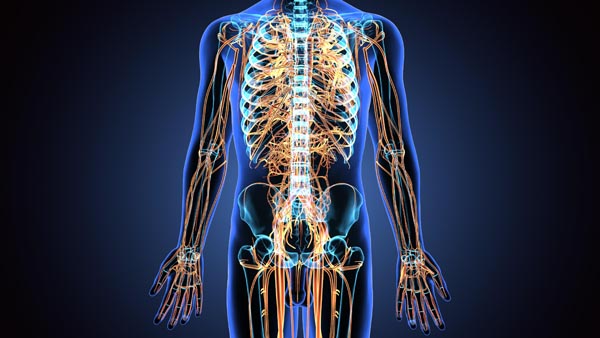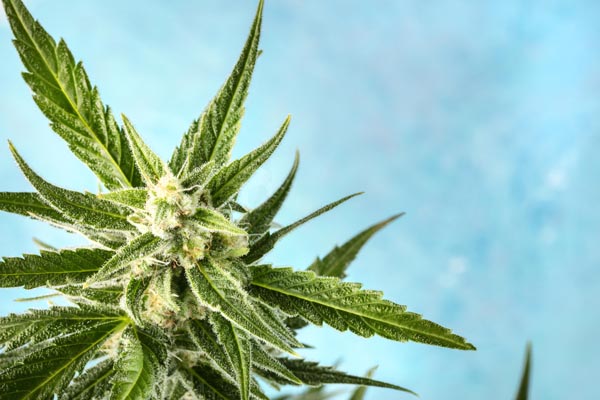Clinical Endocannabinoid Deficiency (CED)
Your body is a very complex collection of systems that are all working together to achieve a common goal.

That common goal is systemic balance throughout the body that results in your overall health and well-being.
When one system is out of balance, it can wreak havoc on every other system in your body. Scurvy, rickets, iron deficiency anemia, obesity and countless other ailments are all examples of how an imbalance in your body can affect multiple systems. When combined, this can result in severe, even life-threatening, medical conditions.
Thanks to modern medicine and nutrition, we now understand what causes many of these ailments and what steps should be taken to bring our bodies back in balance once again.
However, this has not always been the case. In the past, the causes of many of these ailments were medical mysteries. Countless people had to suffer through the symptoms of these ailments, with some even losing their lives, while medical science attempted to learn exactly what the root cause of each ailment was.
Could it be possible that there are still other diseases that are the result of various systemic imbalances within the body that we just have not discovered yet?
If history teaches us anything, then the answer to this question is most likely a resounding yes.
One theory that has come to light in recent years shows promise that diseases like migraine headaches, irritable bowel syndrome (IBS), post-traumatic stress disorder (PTSD), fibromyalgia and other treatment resistant syndromes may in fact be the result of an imbalance in a specific system of the human body that we are still learning about.
The system that we are talking about is known as the Endocannabinoid System, or ECS, and the imbalance mentioned above is referred to as Clinical Endocannabinoid Deficiency (CED).
To understand the concept behind CED, you first need to have a basic understanding of what the Endocannabinoid System is and how it works.
Understanding the Endocannabinoid System
People have understood that cannabis affects the human body for thousands of years.
However, it was not until 1992 that researchers began to understand exactly why cannabis affects people the way that it does.
While we are still not exactly sure why cannabis is able to deliver all of the benefits that it can, research surrounding medical cannabis has come a long way in recent years. There is more scientific research to be conducted before we fully understand the complexities of the Endocannabinoid System, but we now have a knowledge base that further research can expand upon.
The short version of the Endocannabinoid System is that we have a system in our bodies that contains three crucial components:
Cannabinoid Receptors: specialized receptors that help govern the functions of cells.
Endocannabinoids: compounds made by the body that activate cannabinoid receptors.
Metabolic Enzymes: specialized enzymes that break down cannabinoids once they have been used to signal a cellular response.
There are various cannabinoid receptors in our bodies, but the primary two are called CB1 receptors and CB2 receptors. CB1 receptors are mainly found in the brain and central nervous system. CB2 receptors are found throughout the body and immune system.
These cannabinoid receptors have a lot of different functions in our bodies and help the complex systems of our bodies communicate between one another. Their primary function however is to help our bodies maintain balance across all systems and to ultimately help us achieve optimal well-being. CB1 and CB2 receptors are only able to do this when cannabinoids signal the specific receptors to act or not to act.
We have two main endocannabinoids that include anandamide and 2-AG. Our bodies make these endocannabinoids on demand when they are needed. Unlike many other compounds in the body, they are not created ahead of time and used only when needed. They are created the moment that they are needed to convey messages to cannabinoid receptors.
After the endocannabinoid signals the cannabinoid receptors on how to act, they are broken down by metabolic enzymes so they do not stay in the body any longer than they are needed.
Again, this is the short version of exactly how our endocannabinoid system works. If you would like to read more about the Endocannabinoid System, please take a moment to check out our Kanteeva article on the topic.
What is Clinical Endocannabinoid Deficiency?
Clinical endocannabinoid deficiency, or CED, is a theory originally hypothesized by Dr. Ethan Russo in 2001 that links multiple health conditions to a deficiency in the endocannabinoid levels found within your Endocannabinoid System. The theory is very similar to how neurotransmitter deficiencies, like serotonin in depression, are the underlying culprits in various diseases.
For more information about the theory, take a moment to watch this video:
Since Dr. Russo’s original hypothesis in 2001, additional research has been conducted that revisits his original theories.
In recent years, Dr. Russo has published additional papers that link multiple ailments to having an endocannabinoid deficiency component.
Some of these ailments include:
- Anorexia Nervosa
- Motion Sickness
- Fibromyalgia
- Huntington’s Disease
- Irritable Bowel Syndrome (IBS)
- Menstrual Problems
- Migraine Headaches
- Multiple Sclerosis (MS)
- Parkinson’s Disease
- Post-Traumatic Stress Disorder (PTSD)
- Seizure Disorders
- Mood Disorders (Anxiety/Depression)
As you can see from the list above, Clinical Endocannabinoid Deficiency has been linked to multiple ailments for which no cure is currently known. In these instances, treatment is mainly focused on keeping flare-ups at bay and reducing the symptoms of the ailment as much as possible.
Since the Endocannabinoid System helps the body maintain homeostasis and Clinical Endocannabinoid Deficiency is tied to these ailments, what can be done to increase the function of the endocannabinoid system and help restore the homeostasis it regulates?
How to Alleviate Clinical Endocannabinoid Deficiency
Restoring balance to any system in the body can be very challenging. This is especially true when we are not exactly sure about everything the system does, as is the case with the endocannabinoid system.
With that being said, the common consensus among many healthcare practitioners and medical cannabis community members is to approach Clinical Endocannabinoid Deficiency on two fronts.
The first, as explained by Dr. John Teh of PlantMed Medicinal Cannabis, is to nourish our Endocannabinoid System by taking a few steps that include:
- Consuming more Omega 3 essential fatty acids
- Decreasing Omega 6 essential fatty acids
- Avoiding inflammatory foods
- Taking probiotics
- Exercising
- Practicing meditation
- Taking part in physical therapy
- Decreasing stress and cortisol levels
The second, is to supplement the Endocannabinoid System with phytocannabinoids from medical cannabis.
When combined, these two approaches help to boost the efficiency of the Endocannabinoid System while also increasing the availability of cannabinoids in the body.
For more information about this process, please take a moment to watch the video below.
Final Thoughts
While we know more than ever before about Clinical Endocannabinoid Deficiency, there is still research that needs to be conducted before we fully understand this condition.

However, if you or a loved one have been diagnosed with one of the ailments listed above, you should consider having a conversation with your healthcare provider(s) about whether medical cannabis may be an option to add to your existing healthcare regimen.
There have been thousands of people in the medical cannabis community who have been able to find relief from the symptoms of their ailments thanks to medical cannabis.
If you are considering medical cannabis, it is important that you consult your healthcare provider(s) before trying to start a medical cannabis regimen on your own. Your healthcare provider(s) can help you understand your options, how medical cannabis may benefit you and what specific cannabis strains may be the most beneficial for your unique symptoms.
In the meantime, we urge you to look over some of our Kanteeva articles on ailments so that you can better understand how medical cannabis may be able to help you. We also encourage you to join the Kanteeva Community for access to additional helpful information from other medical cannabis patients and practitioners.
We Want to Hear from You

Have you or a loved one found relief from one of the ailments listed above in this article by using medical cannabis? If you have, we would love to hear from you!
Please help us spread the word about the amazing benefits that medical cannabis patients are finding all over the world by becoming part of our Kanteeva community.
With your help, thousands of others could finally find relief too.
Please share your stories, comments and questions below. If you are a medical cannabis patient, please also mention what specific strain has been effective in helping you find relief from the symptoms of your ailment.
Thank you for taking the time to read this article, we look forward to hearing your story soon!
Learn. Share. Connect.
